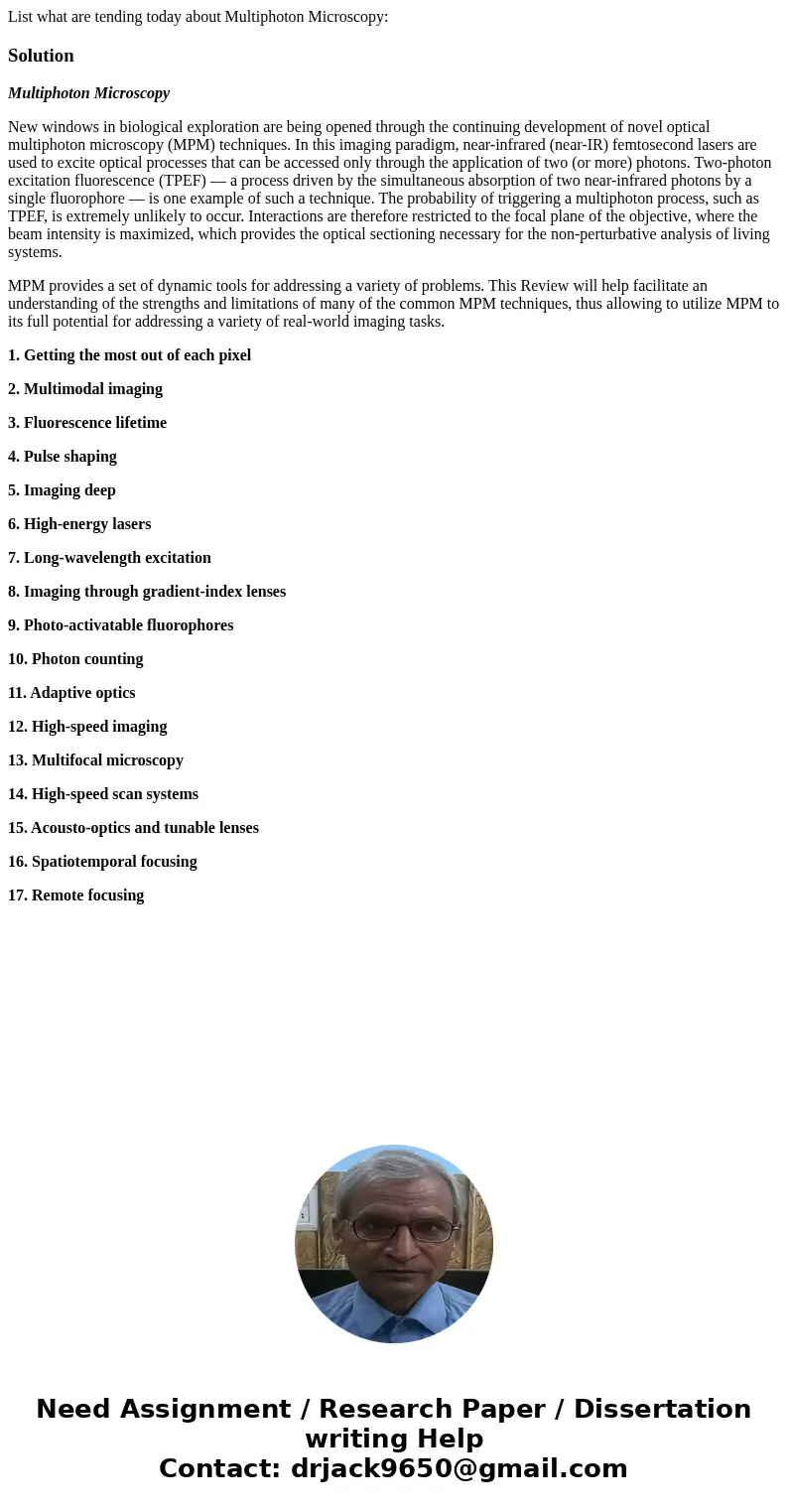List what are tending today about Multiphoton MicroscopySolu
List what are tending today about Multiphoton Microscopy:
Solution
Multiphoton Microscopy
New windows in biological exploration are being opened through the continuing development of novel optical multiphoton microscopy (MPM) techniques. In this imaging paradigm, near-infrared (near-IR) femtosecond lasers are used to excite optical processes that can be accessed only through the application of two (or more) photons. Two-photon excitation fluorescence (TPEF) — a process driven by the simultaneous absorption of two near-infrared photons by a single fluorophore — is one example of such a technique. The probability of triggering a multiphoton process, such as TPEF, is extremely unlikely to occur. Interactions are therefore restricted to the focal plane of the objective, where the beam intensity is maximized, which provides the optical sectioning necessary for the non-perturbative analysis of living systems.
MPM provides a set of dynamic tools for addressing a variety of problems. This Review will help facilitate an understanding of the strengths and limitations of many of the common MPM techniques, thus allowing to utilize MPM to its full potential for addressing a variety of real-world imaging tasks.
1. Getting the most out of each pixel
2. Multimodal imaging
3. Fluorescence lifetime
4. Pulse shaping
5. Imaging deep
6. High-energy lasers
7. Long-wavelength excitation
8. Imaging through gradient-index lenses
9. Photo-activatable fluorophores
10. Photon counting
11. Adaptive optics
12. High-speed imaging
13. Multifocal microscopy
14. High-speed scan systems
15. Acousto-optics and tunable lenses
16. Spatiotemporal focusing
17. Remote focusing

 Homework Sourse
Homework Sourse